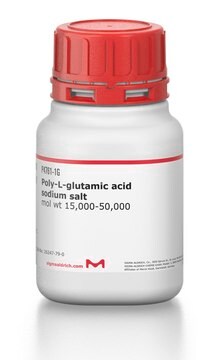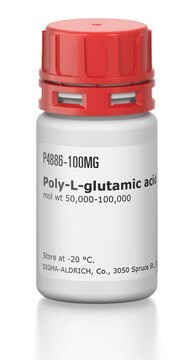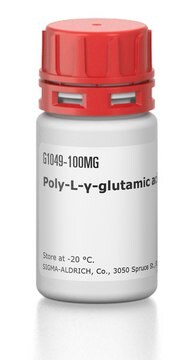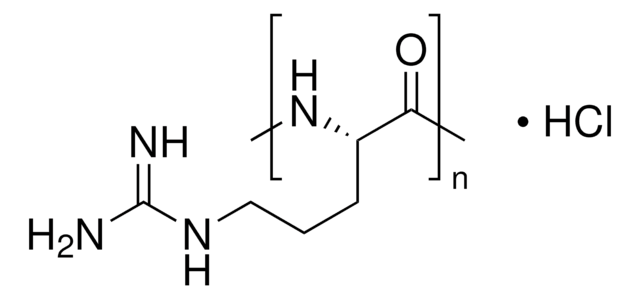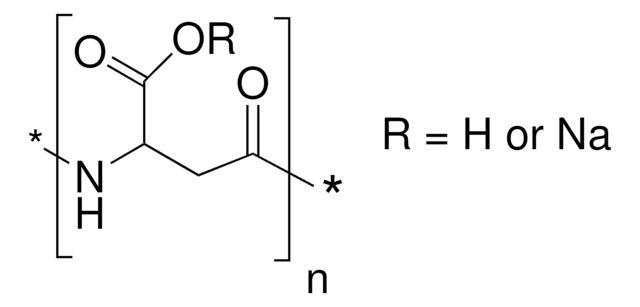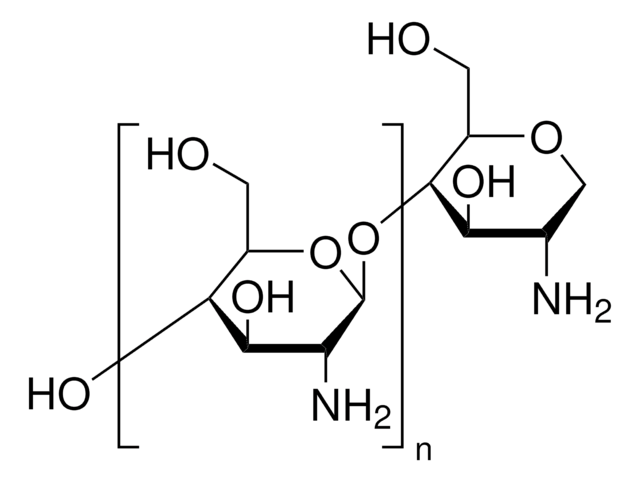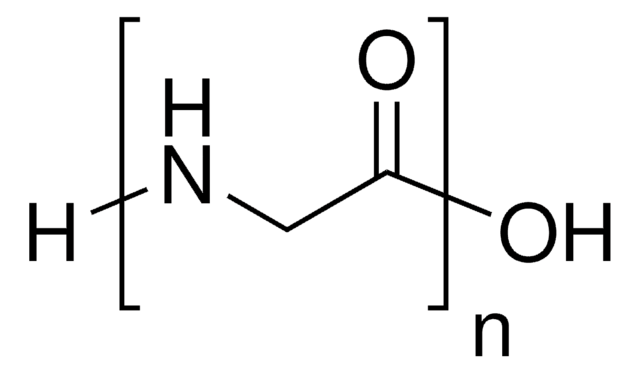P4636
Poly-L-glutamic acid sodium salt
suitable for ligand binding assays, Mol wt 3,000-15,000
Sinonimo/i:
L-Glutamic acid homopolymer sodium salt
About This Item
Prodotti consigliati
product name
Poly-L-glutamic acid sodium salt, mol wt 3,000-15,000
Forma fisica
powder
Livello qualitativo
PM
3,000-15,000
tecniche
ligand binding assay: suitable
Colore
white to off-white
Temperatura di conservazione
−20°C
InChI
1S/C15H23N3O10/c16-7(1-4-10(19)20)13(25)17-8(2-5-11(21)22)14(26)18-9(15(27)28)3-6-12(23)24/h7-9H,1-6,16H2,(H,17,25)(H,18,26)(H,19,20)(H,21,22)(H,23,24)(H,27,28)/t7-,8-,9-/m0/s1
BUZMZDDKFCSKOT-CIUDSAMLSA-N
Cerchi prodotti simili? Visita Guida al confronto tra prodotti
Applicazioni
- Bulk Biopolyelectrolyte Complexes from Homopolypeptides: Solid "Salt Bridges".: Investigates the creation of solid structures from biopolyelectrolyte complexes using Poly-L-glutamic acid sodium salt, emphasizing its potential in creating innovative materials with unique properties (Digby ZA et al., 2023).
- Polymeric Core-Shell Nanoparticles Prepared by Spontaneous Emulsification Solvent Evaporation and Functionalized by the Layer-by-Layer Method.: This research utilizes Poly-L-glutamic acid sodium salt in the production of core-shell structured nanoparticles, indicating its utility in nanoparticle functionalization and stability (Szczęch M et al., 2020).
Risultati analitici
Altre note
Codice della classe di stoccaggio
11 - Combustible Solids
Classe di pericolosità dell'acqua (WGK)
WGK 3
Punto d’infiammabilità (°F)
Not applicable
Punto d’infiammabilità (°C)
Not applicable
Dispositivi di protezione individuale
Eyeshields, Gloves, type N95 (US)
Certificati d'analisi (COA)
Cerca il Certificati d'analisi (COA) digitando il numero di lotto/batch corrispondente. I numeri di lotto o di batch sono stampati sull'etichetta dei prodotti dopo la parola ‘Lotto’ o ‘Batch’.
Possiedi già questo prodotto?
I documenti relativi ai prodotti acquistati recentemente sono disponibili nell’Archivio dei documenti.
Articoli
Humankind has utilized protein materials throughout its existence, starting with the use of materials such as wool and silk for warmth and protection from the elements and continuing with the use of recombinant DNA techniques to synthesize proteins with unique and useful properties.
Il team dei nostri ricercatori vanta grande esperienza in tutte le aree della ricerca quali Life Science, scienza dei materiali, sintesi chimica, cromatografia, discipline analitiche, ecc..
Contatta l'Assistenza Tecnica.